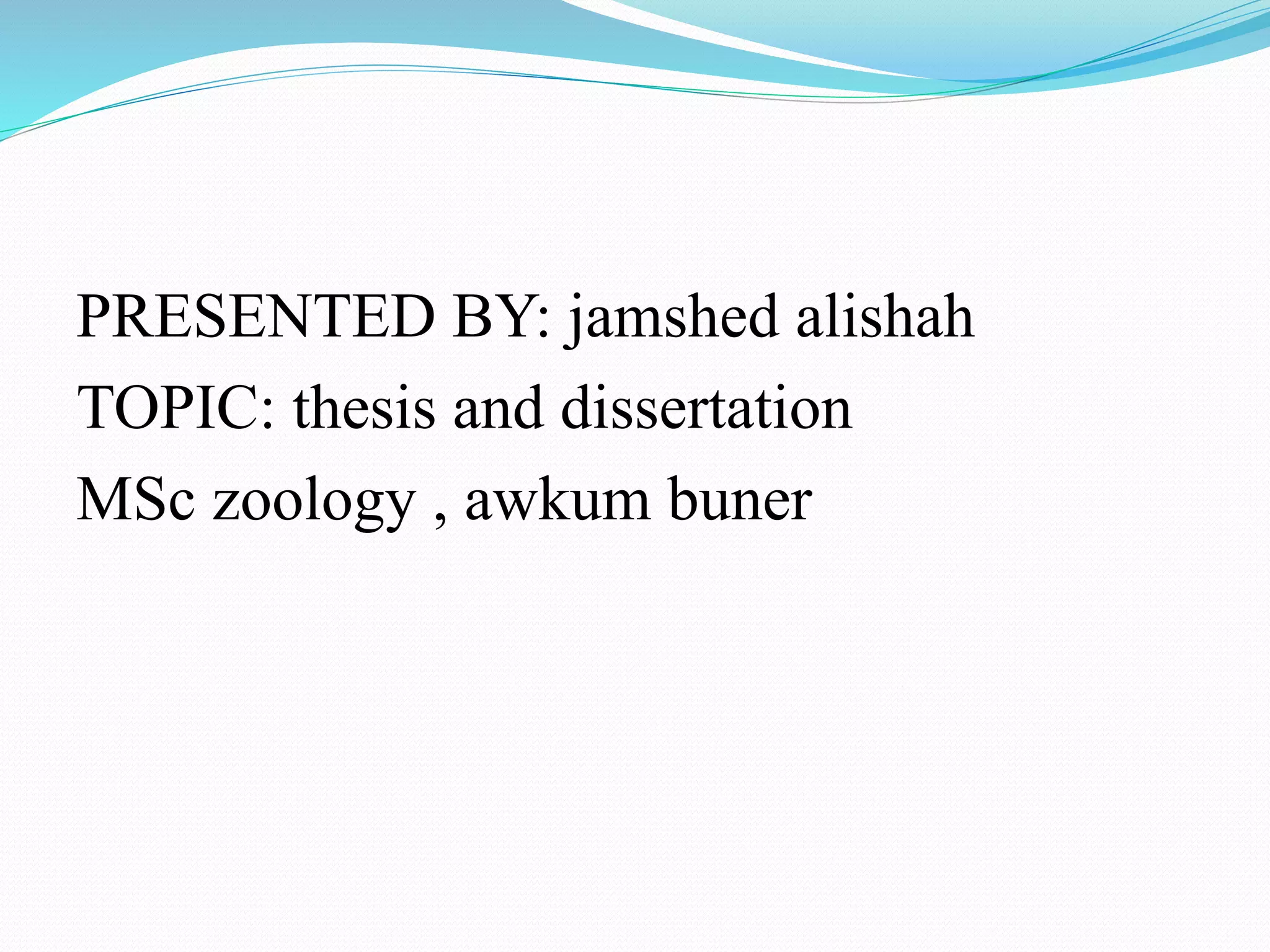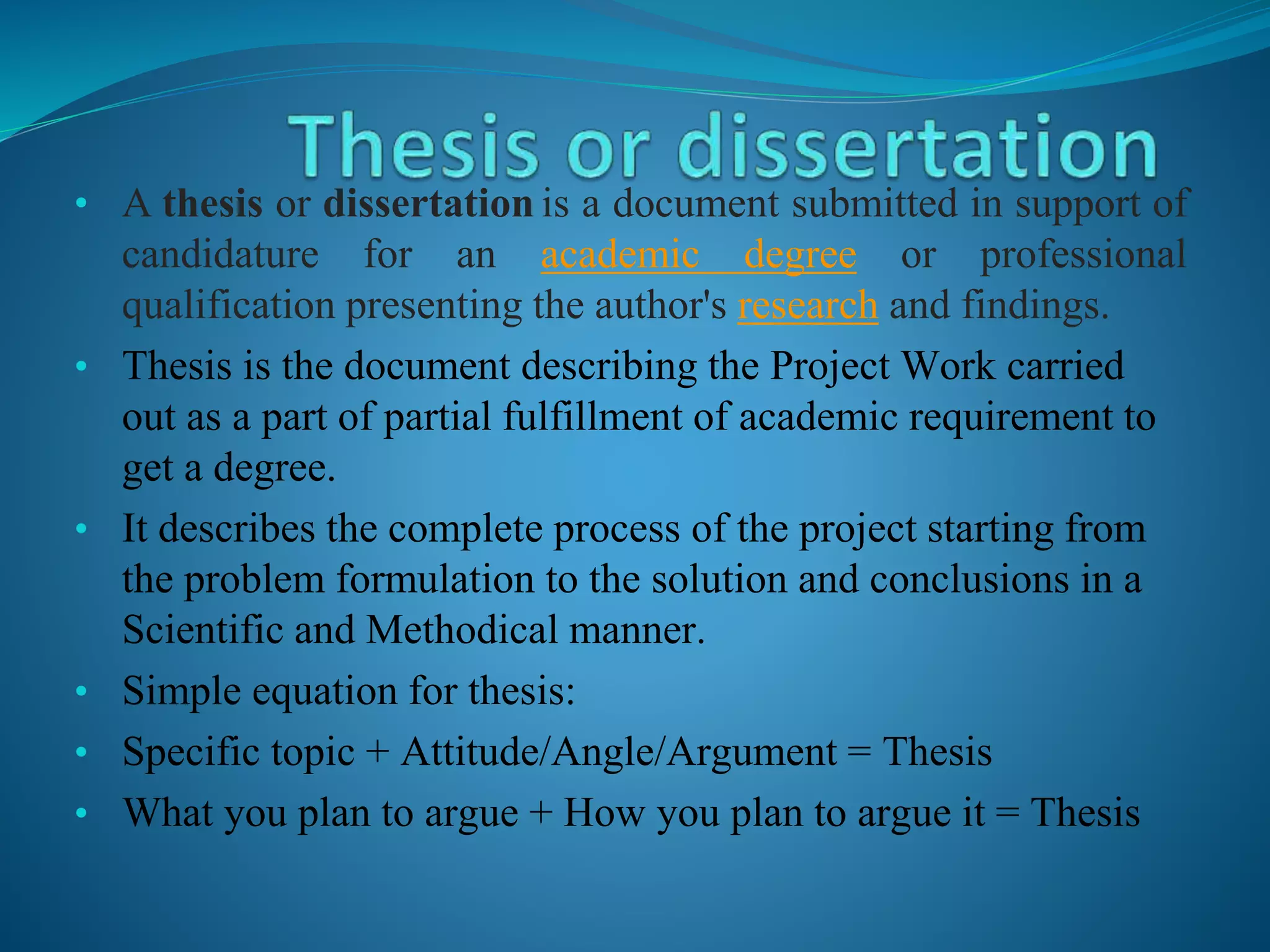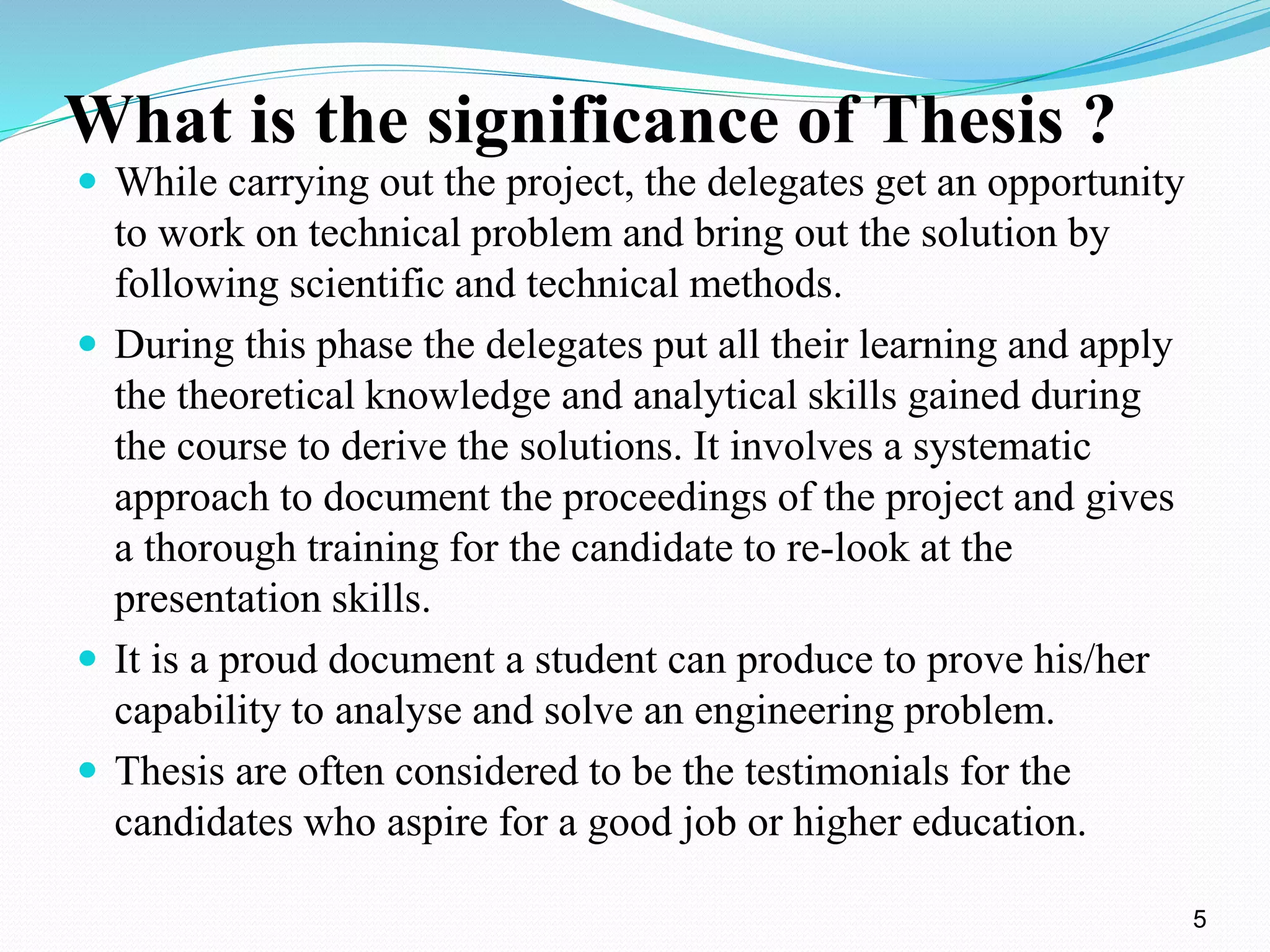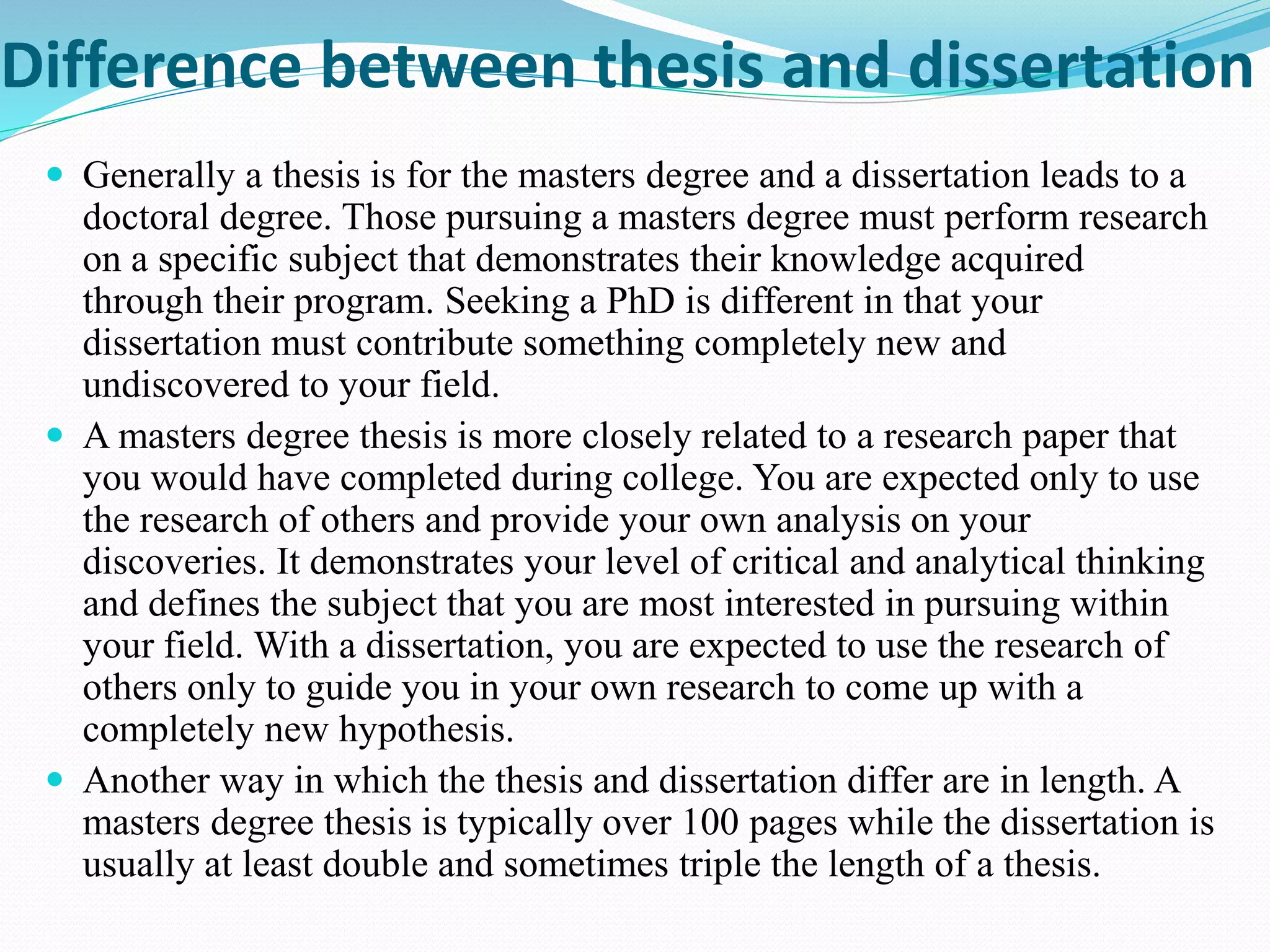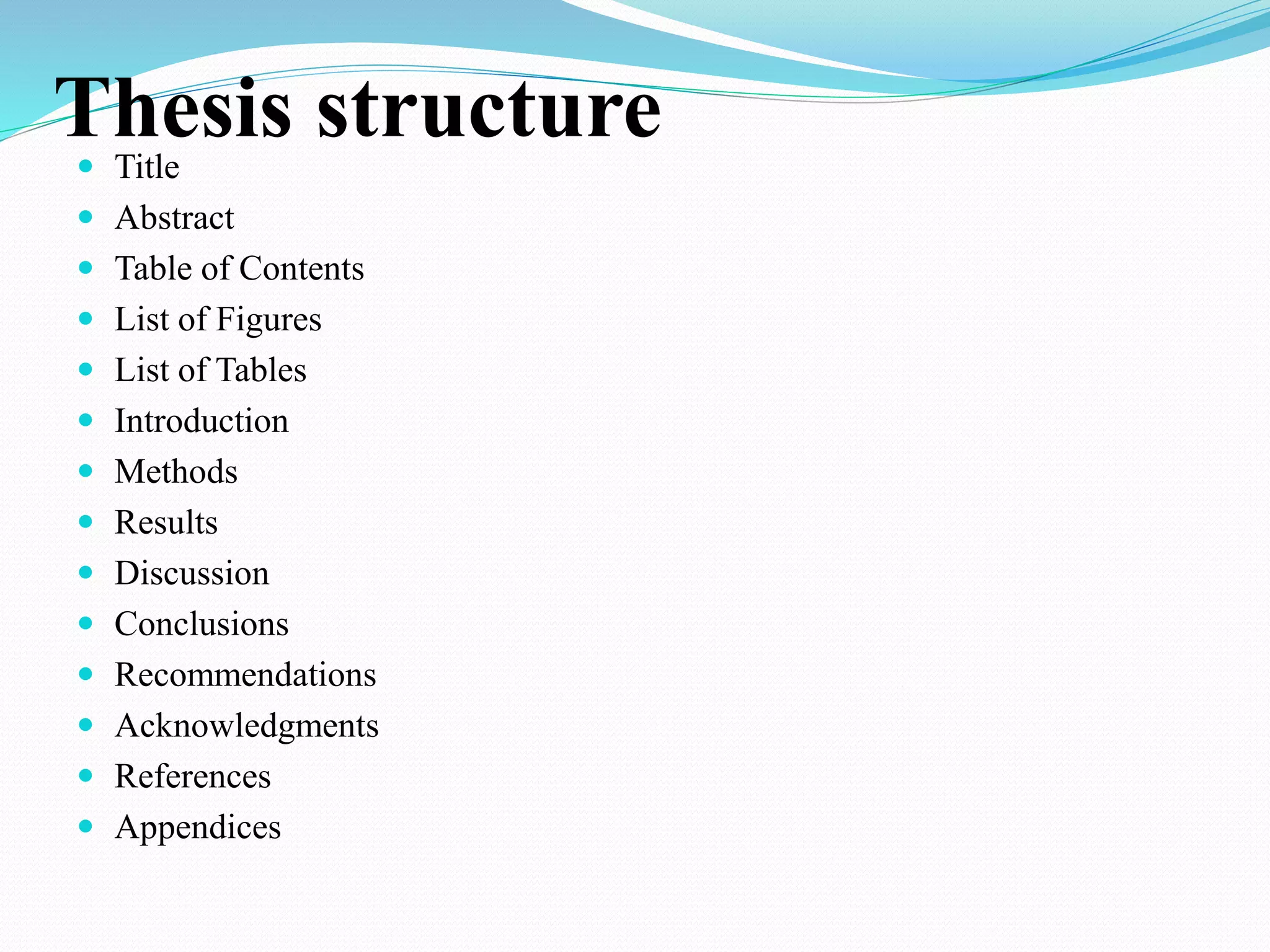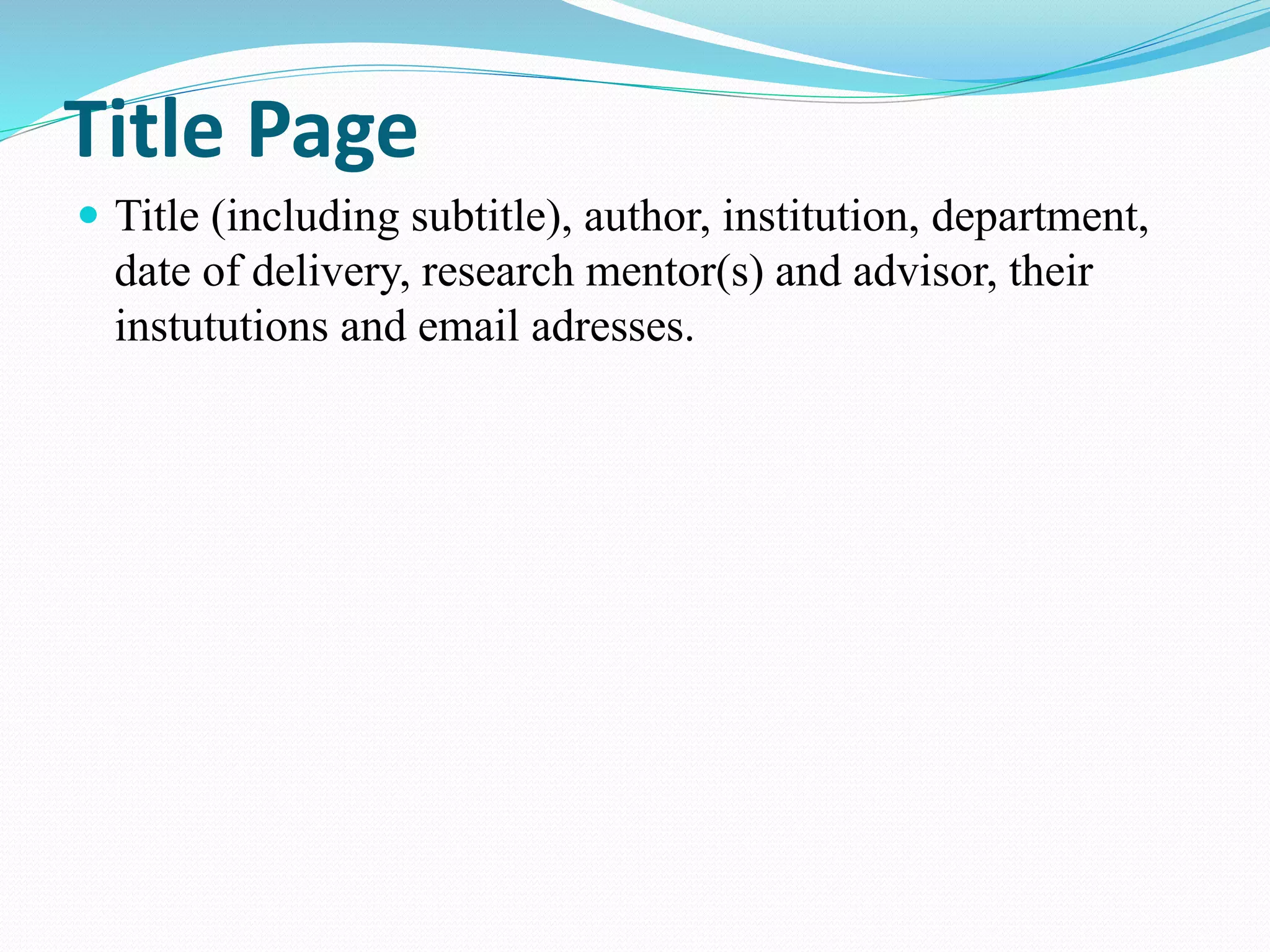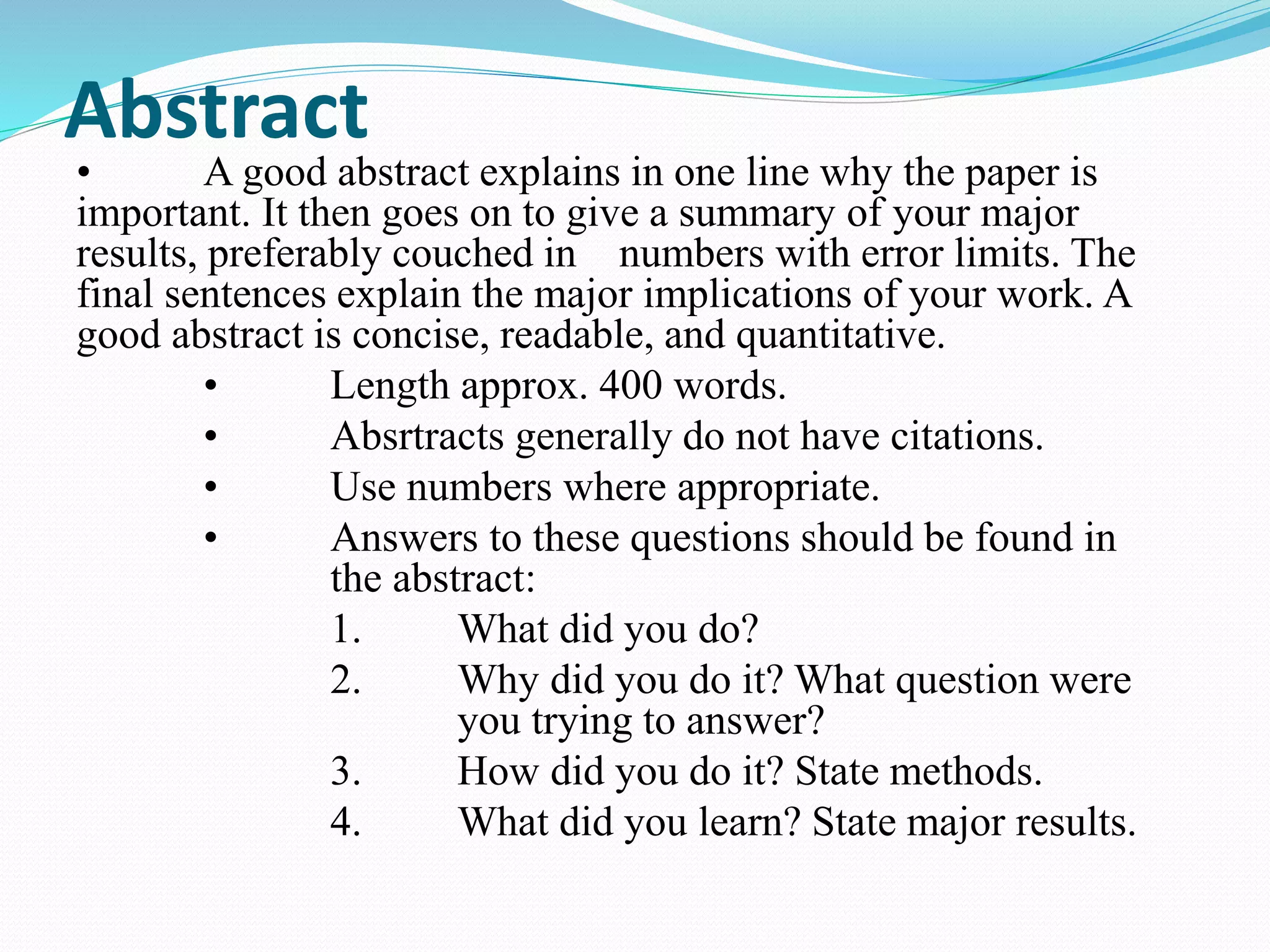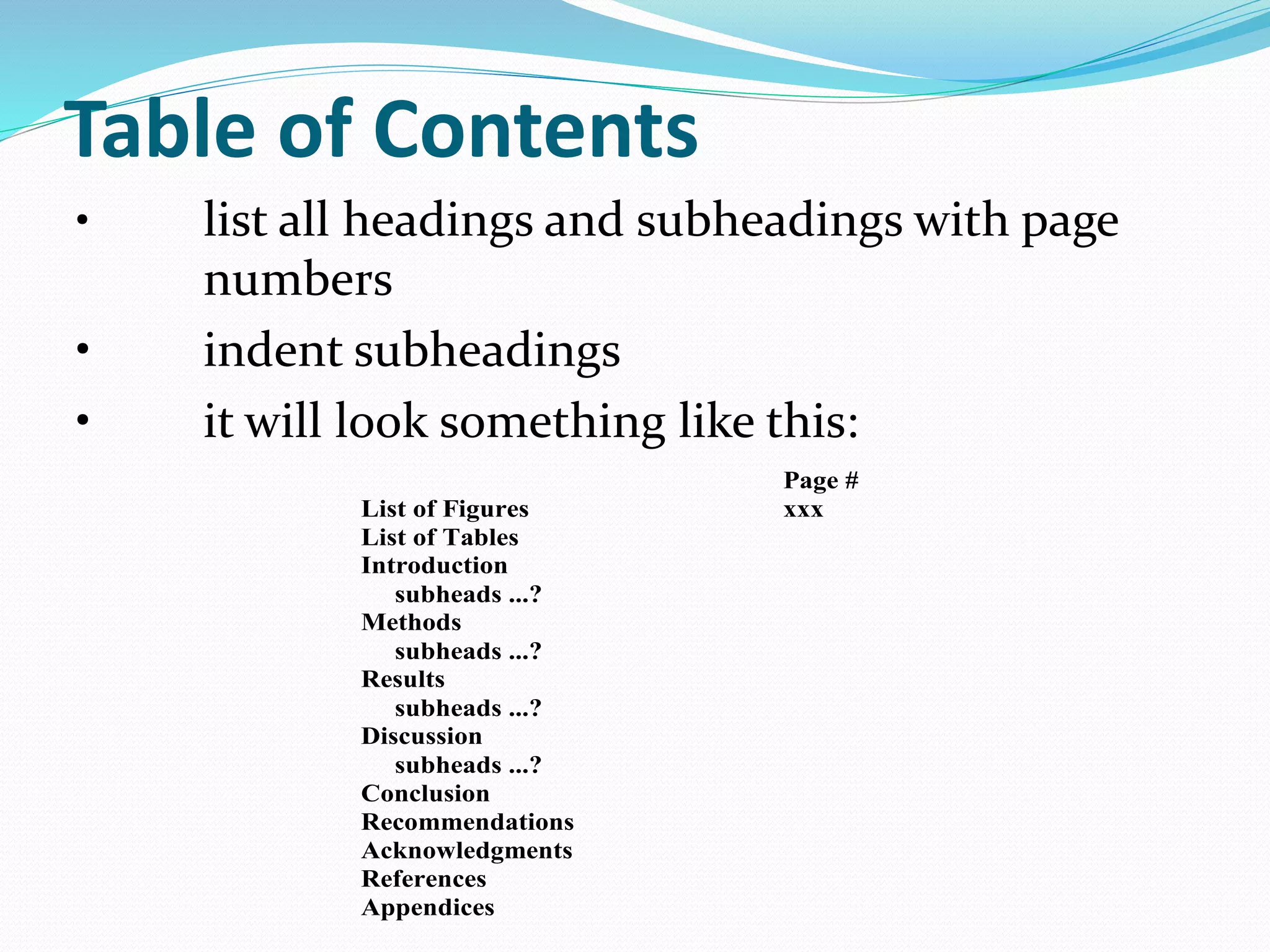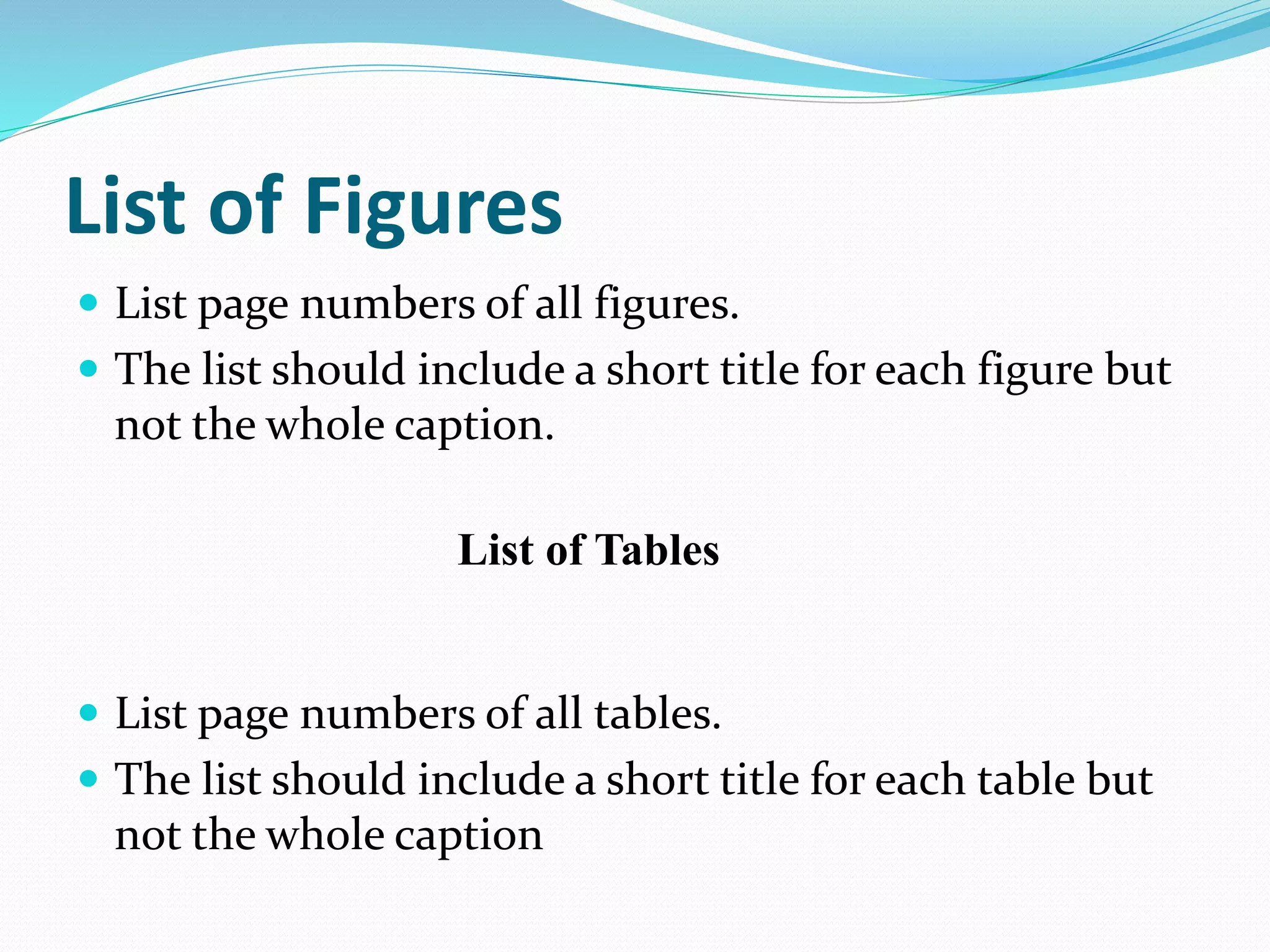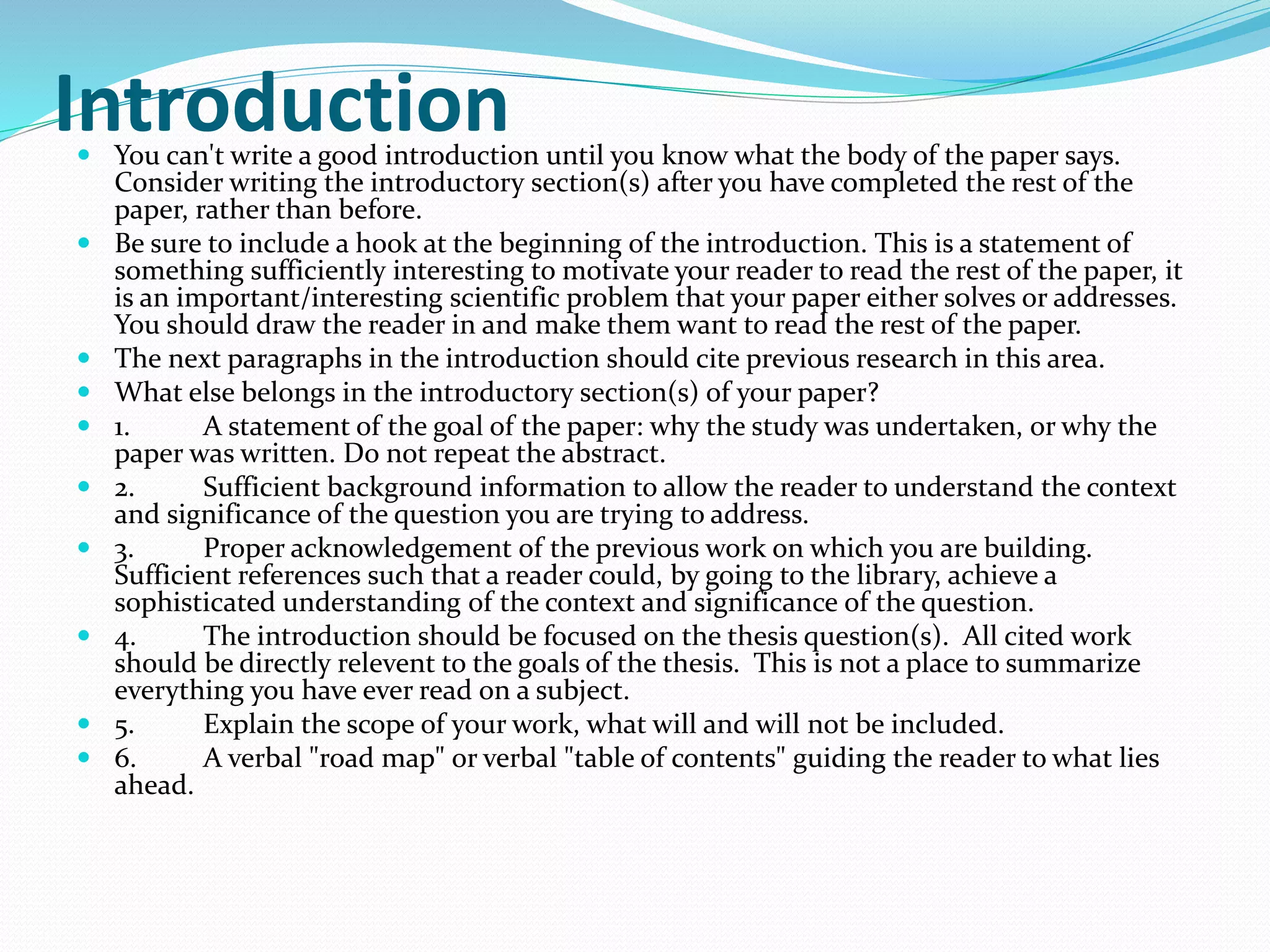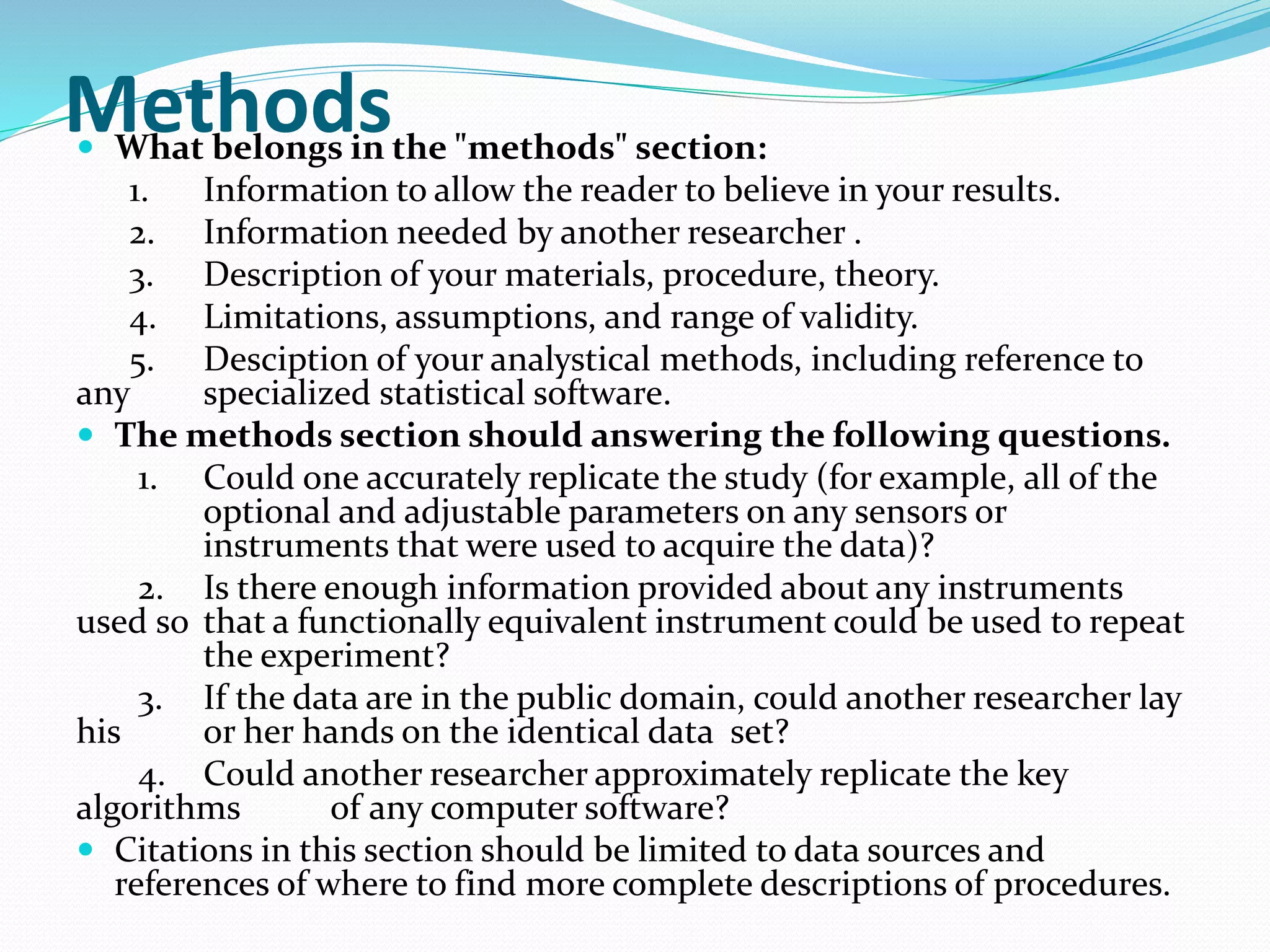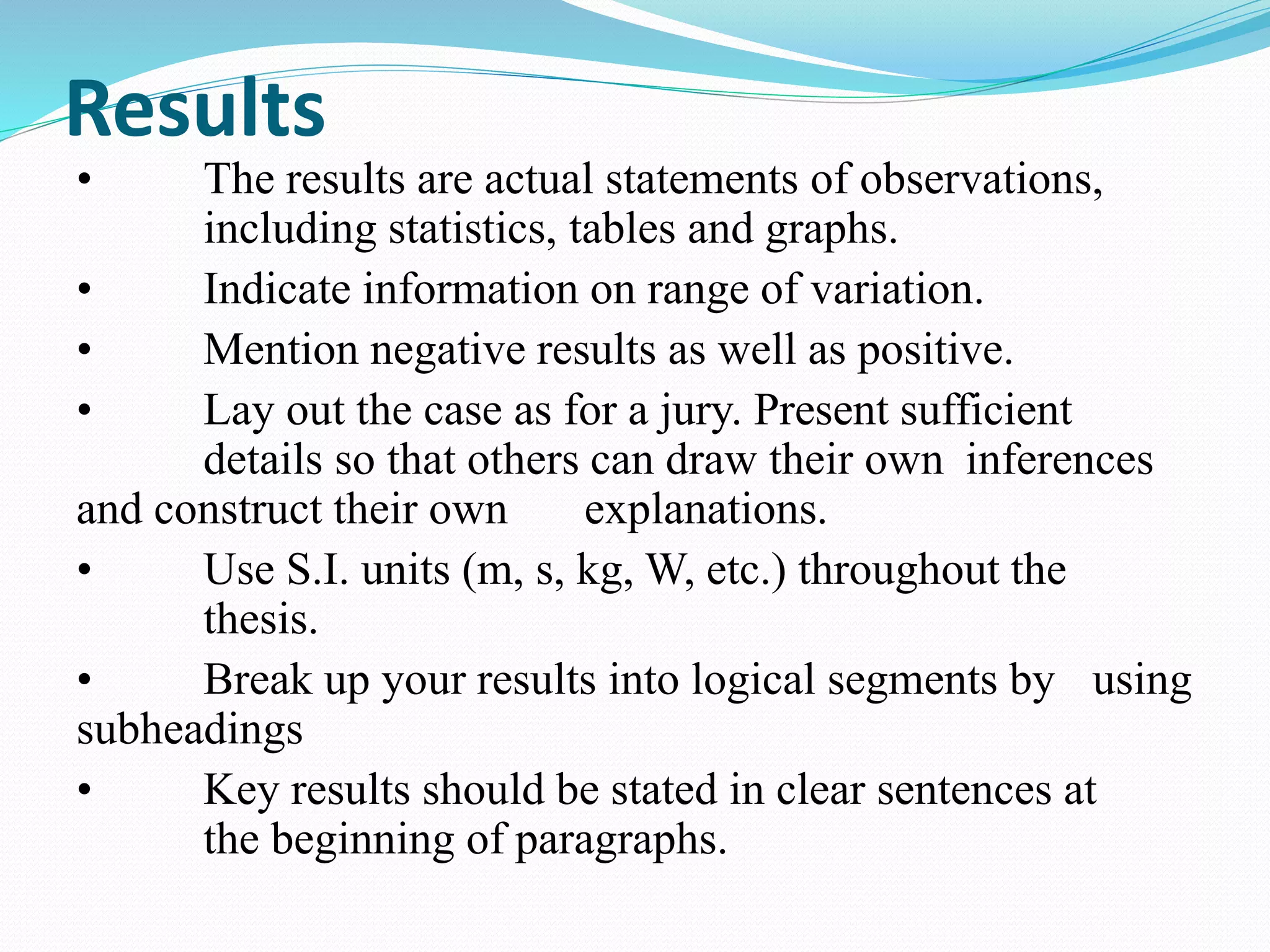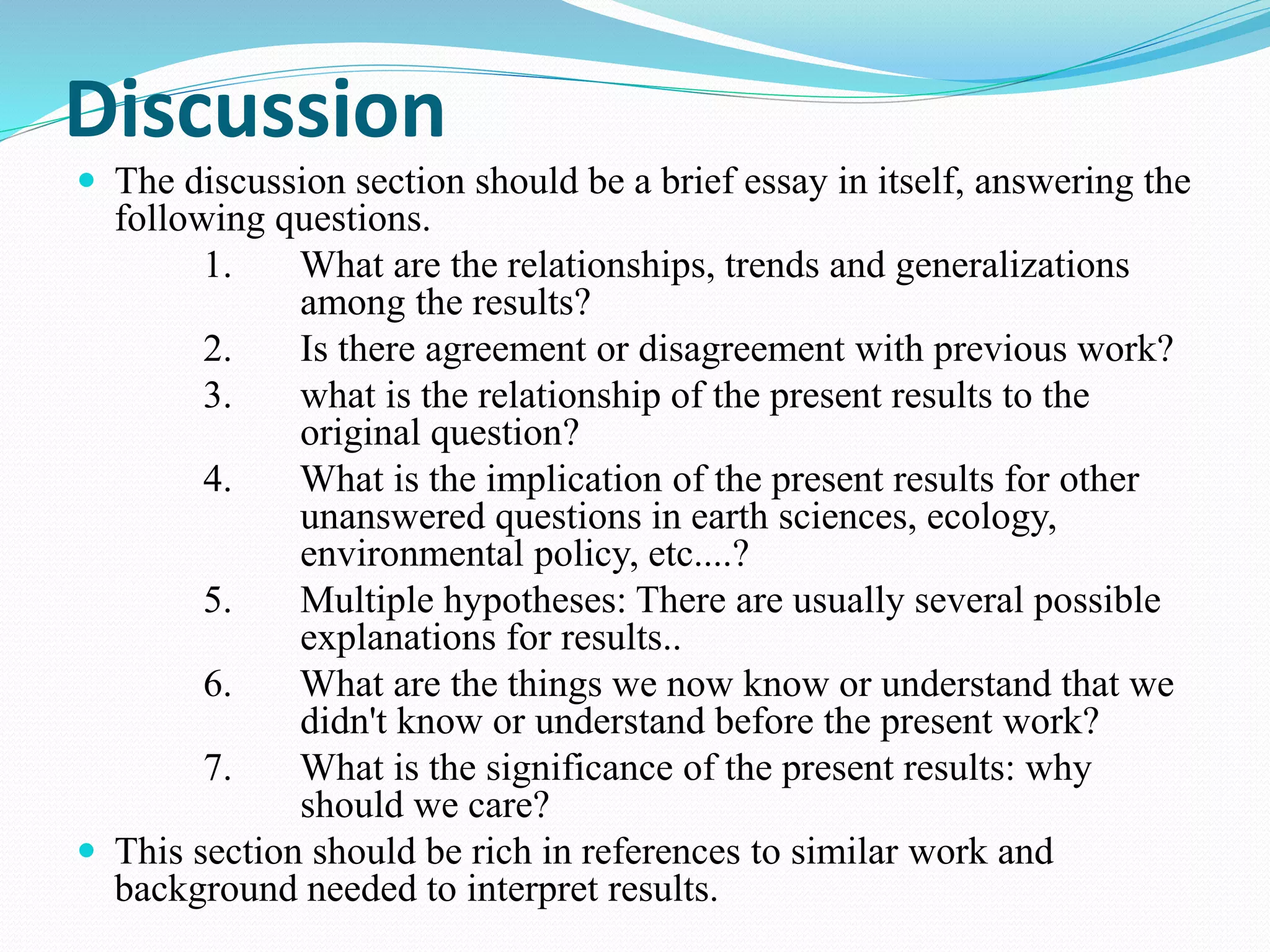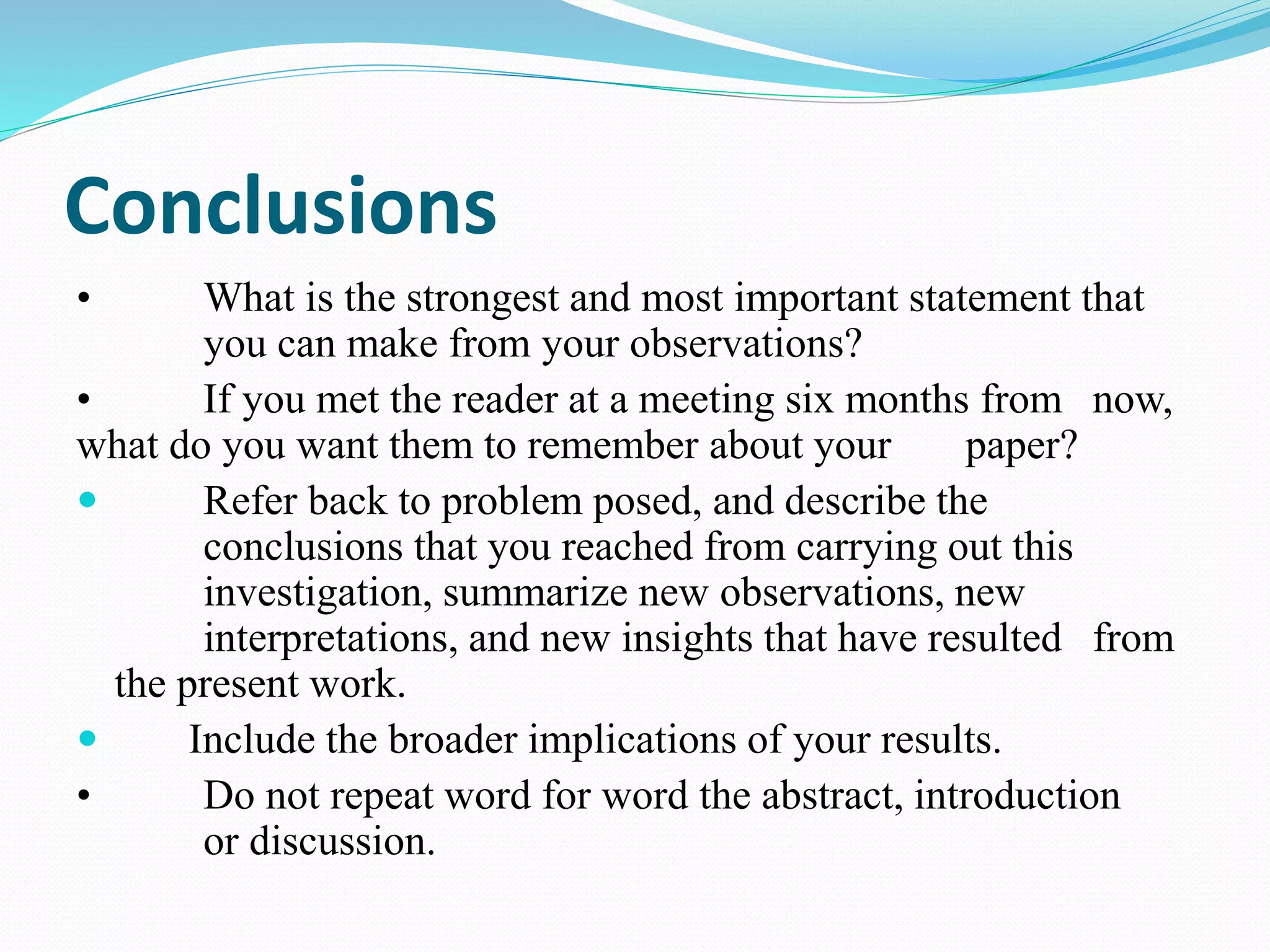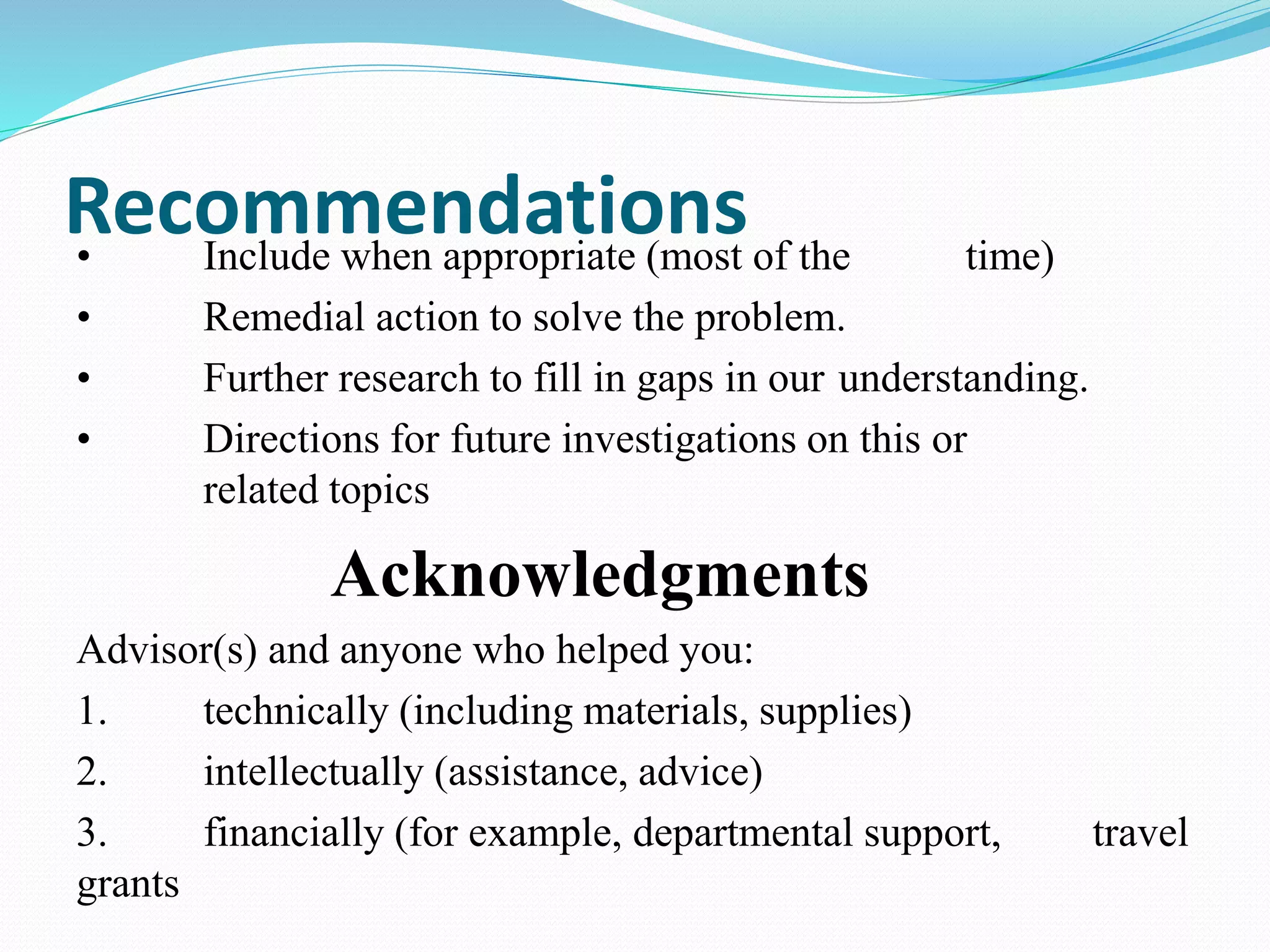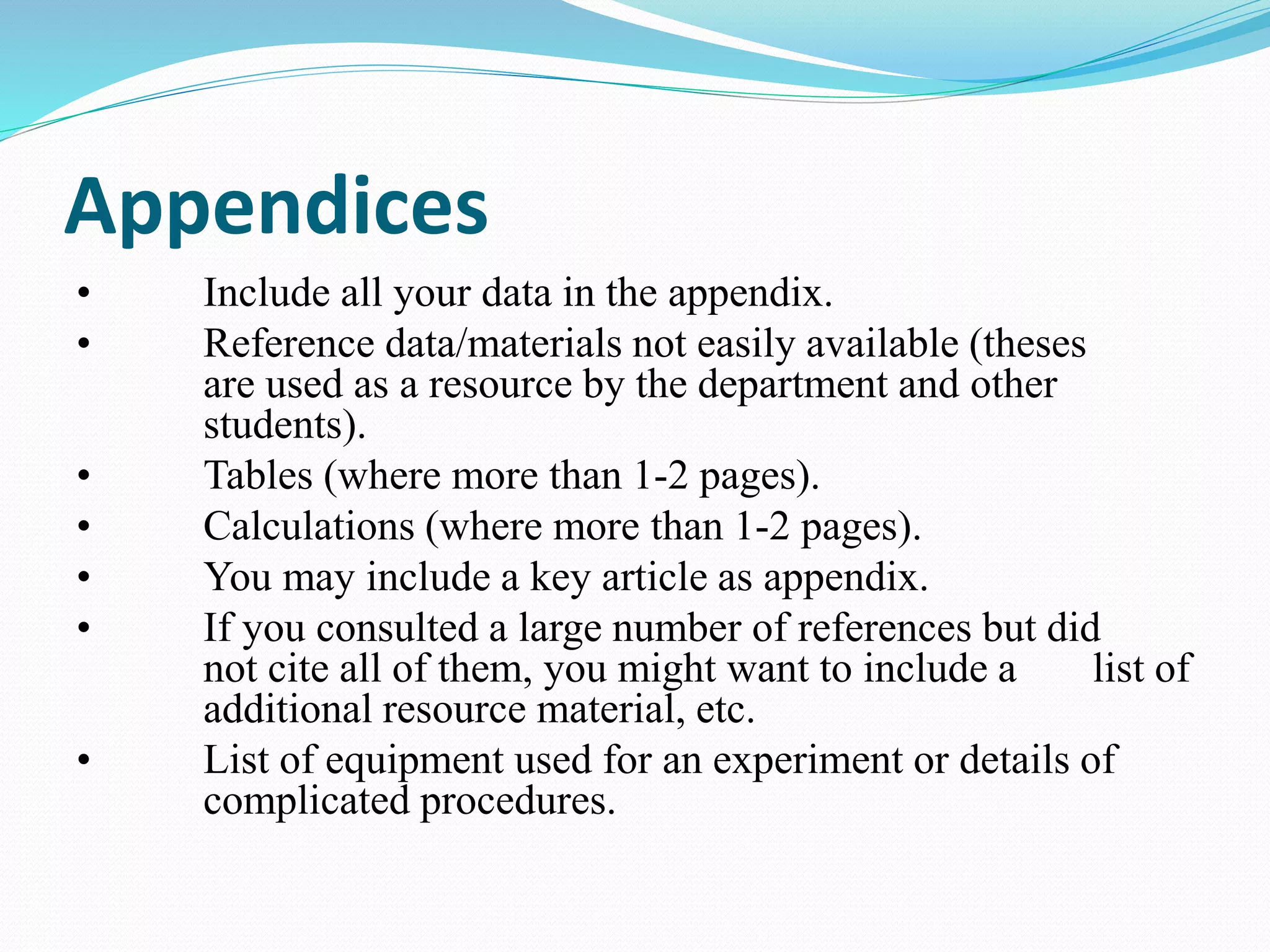This document discusses the structure and purpose of a thesis or dissertation. It begins by defining a thesis as a document submitted in support of a degree that presents original research and findings. It then outlines the typical sections of a thesis, including an introduction describing the problem and previous work, methods, results, discussion, and conclusions sections. It notes that a thesis allows students to apply their learning by working on a technical problem and documenting their process and findings. The document also compares theses to dissertations, noting dissertations are typically longer and must contribute something new to the field while theses demonstrate analytical skills and critical thinking within a topic.

